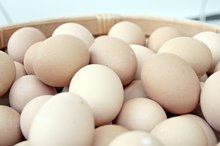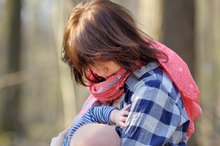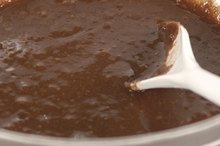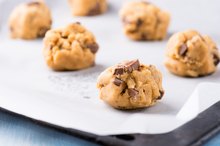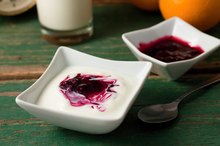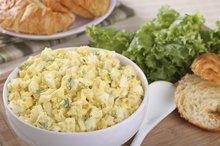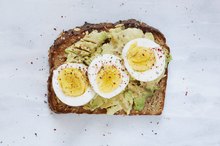What does fact checked mean?
At Healthfully, we strive to deliver objective content that is accurate and up-to-date. Our team periodically reviews articles in order to ensure content quality. The sources cited below consist of evidence from peer-reviewed journals, prominent medical organizations, academic associations, and government data.
- American Journal of Diseases of Children: Breast Feeding and Salmonella Infection
- American Journal of Diseases of Children: Breast Feeding and Salmonella Infection
- National Digestive Diseases Information Clearinghouse: Bacteria and Foodborne Illness
The information contained on this site is for informational purposes only, and should not be used as a substitute for the advice of a professional health care provider. Please check with the appropriate physician regarding health questions and concerns. Although we strive to deliver accurate and up-to-date information, no guarantee to that effect is made.
Can You Eat Raw Cookie Dough While Breast-feeding?
Raw cookie dough can carry dangerous pathogens and when you are breastfeeding this can be an even bigger concern than at other times; however, despite the dangers, it might not be a big deal should you accidentally eat something you aren't supposed to. Practicing food safety is a good idea for a nursing mother, but if you do become ill, you don't necessarily need to stop breastfeeding.
Breastfeeding Nutrition
Breastfeeding mothers need not restrict specific food groups during nursing, including snacks or desserts. If you are nursing a baby, you should aim to eat a balanced diet containing all of the nutrients you and your baby need, but this should be attainable through a healthy, balanced diet. Cookie dough, both raw and prepared as cookies, isn't the healthiest food, but nutritionally should pose no problem when eaten on occasion as part of an otherwise balanced diet.
Cookie Dough Food Safety
Can You Eat Raw Eggs While Breastfeeding?
Learn More
The main concern about eating raw cookie dough, whether breastfeeding or not, is the potential for contamination with the bacteria salmonella. Salmonella sometimes occurs in raw eggs, an ingredient in raw cookie dough 2. Only about 1 in 10,000 eggs are infected with this pathogen, according to the National Digestive Diseases Information Clearinghouse, so in most cases even raw cookie dough will remain safe. Cooking destroys the salmonella pathogen, so prepared cookies carry no risk. Cookies prepared without eggs also might be completely safe for consumption.
- The main concern about eating raw cookie dough, whether breastfeeding or not, is the potential for contamination with the bacteria salmonella.
Salmonella and Breastfeeding
Even if you do take an occasional swipe of raw cookie dough, you need not fear passing on a potential salmonella infection to your child as long as you don't feed the baby any of the dough itself. Salmonella does not pass into breast milk from a mother's digestive tract 2. In fact, breastfeeding actually exerts a protective effect against salmonella 2. Immune cells in breast milk, and colostrum, the liquid produced before breast milk comes in, destroy salmonella organisms 2.
Points to Consider
Boils While Breast-feeding
Learn More
If you do contract salmonella, continue to breastfeed your baby but make sure you get extra fluids, since vomiting and diarrhea caused by this illness can cause dehydration. Severe dehydration might negatively impact milk supply, so if this occurs you might have to supplement with stored pumped milk or formula.
Related Articles
References
- KidsHealth from Nemours: Food Safety for Your Family
- American Journal of Diseases of Children: Breast Feeding and Salmonella Infection
- Giannella RA. Salmonella. In: Medical Microbiology. 4th ed. Galveston, TX: The University of Texas Medical Branch at Galveston.; 1996.
- Tuompo R, Hannu T, Mattila L, Siitonen A, Leirisalo-repo M. Reactive arthritis following Salmonella infection: a population-based study. Scand J Rheumatol. 2013;42(3):196-202. doi:10.3109/03009742.2012.739201
- Fatica MK, Schneider KR. Salmonella and produce: survival in the plant environment and implications in food safety. Virulence. 2011;2(6):573-9. doi:10.4161/viru.2.6.17880
- Demirbilek SK. Salmonellosis in Animals. Salmonella - A Re-emerging Pathogen. 2018. doi:10.5772/intechopen.72192
- Eng S-K, Pusparajah P, Mutalib N-SA, Ser H-L, Chan K-G, Lee L-H. Salmonella: A review on pathogenesis, epidemiology and antibiotic resistance. Frontiers in Life Science. 2015;8(3):284-293. doi:10.1080/21553769.2015.1051243
- Salmonella Management and Treatment. Cleveland Clinic. Jan 17, 2019.
- Foods Most Likely to Cause Food Poisoning | CDC Food Safety. Centers for Disease Control and Prevention. Aug 4, 2019.
- Four Steps (Clean, Separate, Cook, Chill) to Food Safety | Food Safety | CDC. Centers for Disease Control and Prevention. Jul 21, 2017.
- Prevention | General Information | Salmonella | CDC. Centers for Disease Control and Prevention. Feb 8, 2019.
- Salmonella Infection. CDC. https://www.cdc.gov/healthypets/diseases/salmonella.html.
- Salmonella. CDC. https://www.cdc.gov/salmonella/
- Salmonella Outbreak Investigations. CDC. https://www.cdc.gov/salmonella/outbreaks.html.
- Salmonella Questions and Answers. USDA Food Safety and Inspection Service. https://www.fsis.usda.gov/wps/portal/fsis/topics/food-safety-education/get-answers/food-safety-fact-sheets/foodborne-illness-and-disease/salmonella-questions-and-answers.
Writer Bio
Bridget Coila specializes in health, nutrition, pregnancy, pet and parenting topics. Her articles have appeared in Oxygen, American Fitness and on various websites. Coila has a Bachelor of Science in cell and molecular biology from the University of Cincinnati and more than 10 years of medical research experience.
